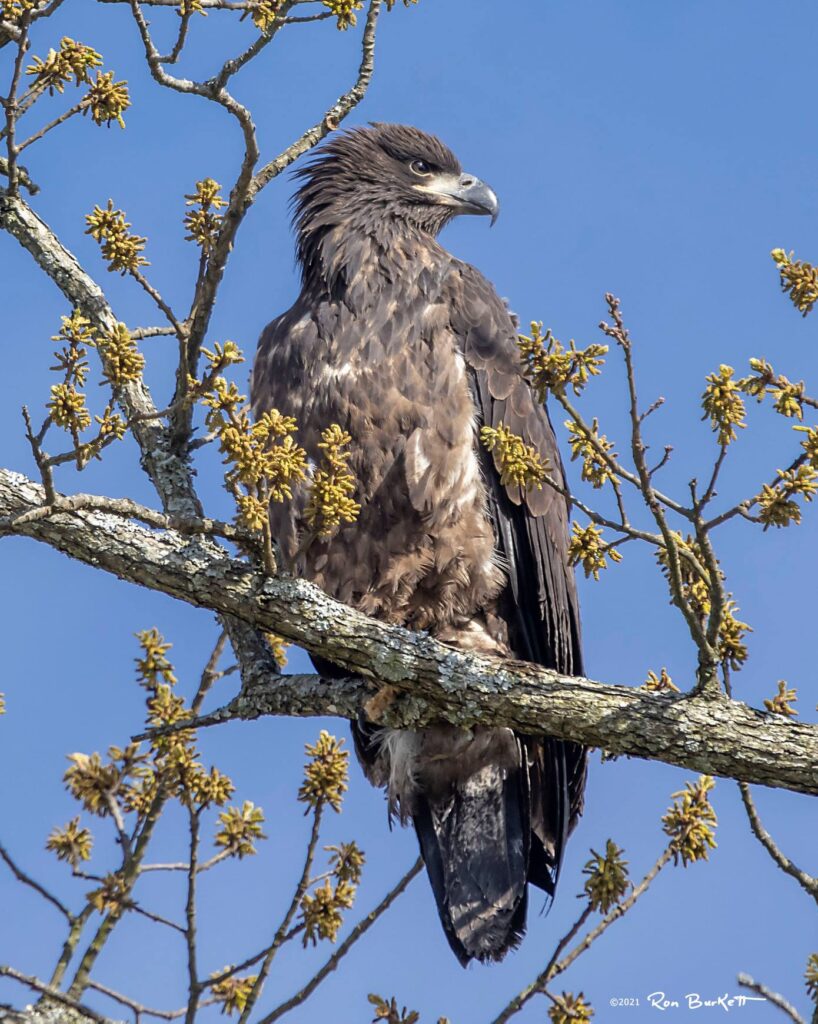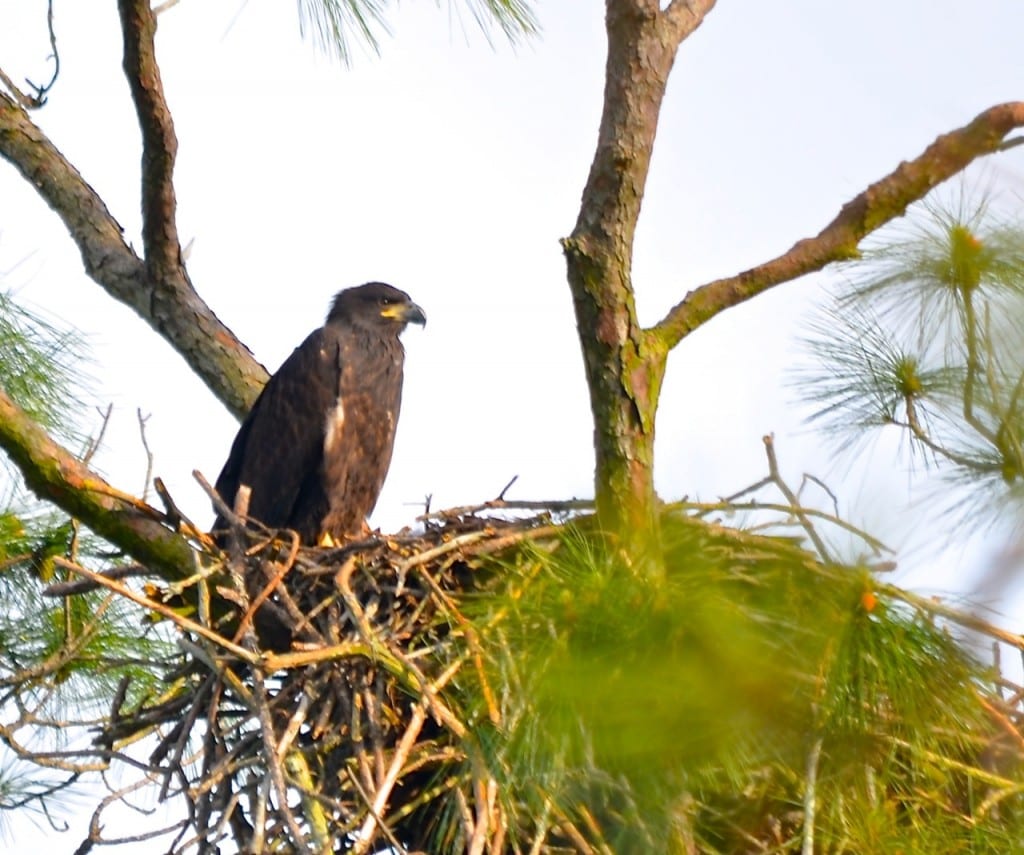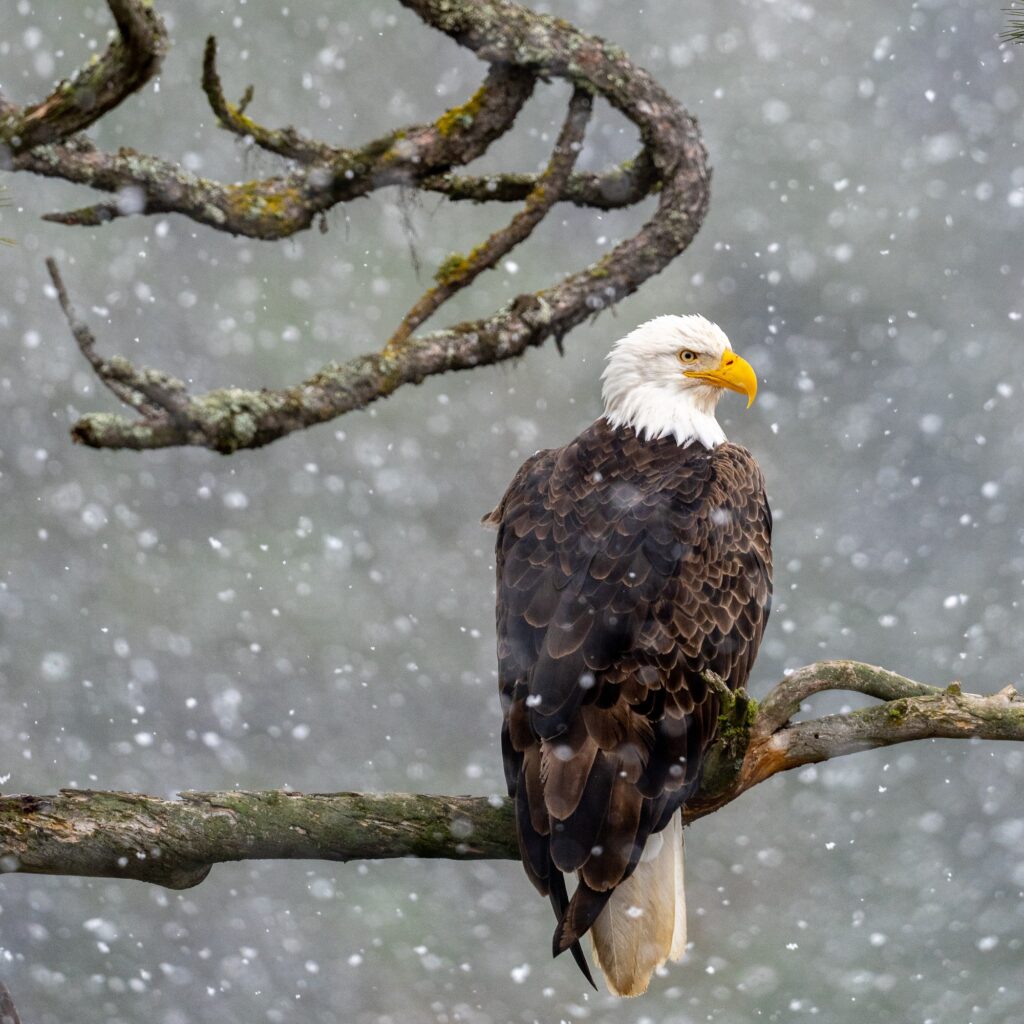
Photographer Jake Ryan had been observing this one through snow flurries by Lake Coeur d’Alene in northern Idaho: FWS courtesy of Jake Ryan.
Glynn Wilson –
At a time of so much bad news for humans on planet Earth and in the United States, it might be a good thing to take a moment to consider a little good news from science and nature: The conservation success story of the American bald eagle (Haliaeetus leucocephalus).
Populations of the national bird and often used symbol of the United States quadrupled just since 2009, according to a new report out from the U.S. Fish and Wildlife Service, another indication that science is back on the agenda of the federal government under the new Biden administration.
U.S. Secretary of the Interior Deb Haaland, the first Native American Cabinet secretary, said the announcement is “truly a historic conservation success story.”
“I believe that we have the opportunity of a lifetime to protect our environment and our way of life for generations to come,” Haaland said. “But we will only accomplish great things if we work together.”
It will take suppressing the human selfish-gene and fostering altruism throughout culture to create more success stories like this.
Related: Reversing Trump Policy, Biden EPA Brings Back Climate Change Science Online
Bald eagles once teetered on the brink of extinction, according to federal records, reaching an all-time low of 417 known nesting pairs in 1963 in the lower 48 states primarily due to the spraying of the toxic pesticide DDT to eradicate mosquitoes. The chemical rendered eagle egg shells thin and brittle, causing most hatchlings to die.
After decades of federal regulations and protection, however, including the banning of the pesticide DDT and other conservation efforts, the bald eagle population has flourished, growing to more than 71,400 nesting pairs to date.
According to scientists from the U.S. Fish and Wildlife Migratory Bird Program, the bald eagle population climbed to an estimated 316,700 individuals in the lower 48 states, and indicates the bald eagle population has continued to increase rapidly since the previous survey.
“The recovery of the bald eagle is one of the most well-known conservation success stories of all time,” said USFW Service Deputy Director Martha Williams. “The service continues to work with our partners in state and federal agencies, tribes, non-government organizations and with private landowners to ensure that our nation’s symbol continues to flourish.”
Ron Burkett, who often photographs eagles and other birds in Alabama, said he has enjoyed watching wildlife since his youth.
“As a child of the ’60s I remember when the American bald eagle was declared endangered in 1978,” he said in an interview on Facebook messenger. “At that time I never suspected I’d ever see one in my lifetime, especially in Alabama, and am thrilled they have made a successful comeback.
“As a photographer, I am excited for the opportunity to photograph them,” he said, “but even more grateful for the conservation efforts that allowed them to thrive and extend their range into my home state of Alabama.”
See more of his photographs here.
Milton Rittelmeyer, former assistant manager of Gulf State Park in Gulf Shores, Alabama, has watched with interest as the bald eagles came back from the brink of extinction along the coast over the past few years. He’s been reporting on Facebook about a nesting pair near Lake Shelby with two young juveniles.
“Having worked in the Parks Division of the Alabama Department of Conservation for 37 years, the re-introduction of bald eagles into Gulf State Park has brought much excitement and joy for me and for all who can observe them in their habitat,” Rittelmeyer said in an interview on Facebook Messenger.
“The U. S. Fish and Wildlife Service started the process with a hacking tower in the Bon Secour Wildlife Refuge several years ago. The results of that endeavor has created a heartwarming success story of the rapid increase of the American bald eagle in our area,” he said, and added the he was “looking forward to many more years of observing and enjoying America’s symbol of freedom.”
To estimate the bald eagle population in the lower 48 states, Migratory Bird Program pilot biologists and observers from many service regions, programs and contract observers conducted aerial surveys over a two-year period in 2018 and 2019.
The service flew aerial surveys over high-density eagle nesting areas to generate accurate estimates and count occupied nesting territories. To obtain information on the lower density eagle nesting areas, the agency worked with the Cornell Lab of Ornithology to use eBird relative abundance data to acquire information on the areas that were not practical to fly as part of our aerial surveys.
Based on those two major sets of data for this population estimate, the service next created an integrated population model to expand the estimates of the number of occupied nests across the plot area to estimates of the entire population in the lower 48 states. Information on survival rates, productivity and breeding rates provided the information needed to make this conclusion.
“Working with Cornell to integrate data from our aerial surveys with eBird relative abundance data on bald eagles is one of the most impressive ways the service has engaged with citizen science programs to date,” said Service Assistant Director for Migratory Bird Program Jerome Ford. “This critical information was imperative to accurately estimate the bald eagle population in the contiguous United States, and we look forward to working with Cornell in the future.”
This technical report is the second in a series of reports that have been published on bald and golden eagles.
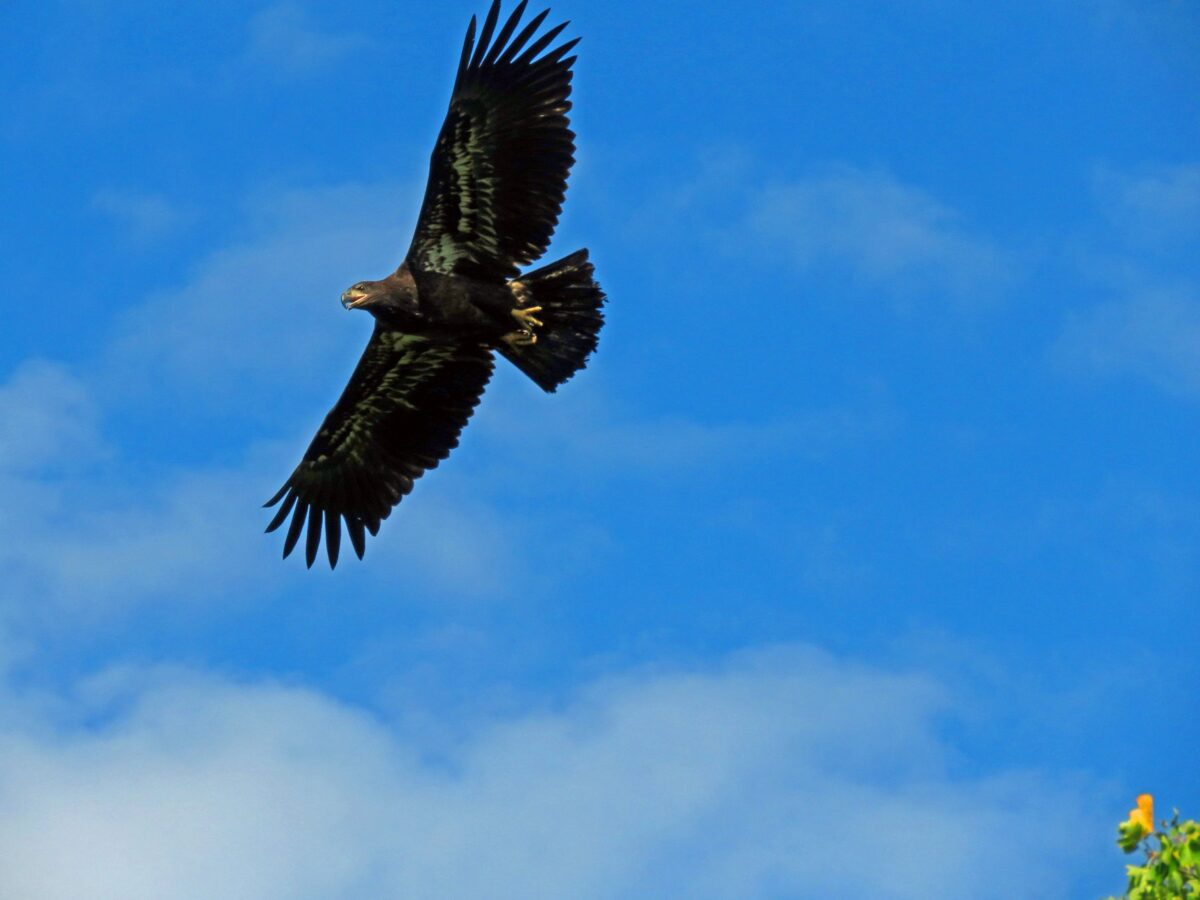
A golden eagle, along the cliffs over the Potomac River leading to the Chesapeake Bay in Virginia: Glynn Wilson
“One of our main objectives was to see if population modeling based on the Cornell Lab’s eBird data would enhance the survey work the Service was already doing,” said Viviana Ruiz-Gutierrez, Assistant Director of Cornell Lab’s Center for Avian Population Studies, who supervised the lab’s role in this partnership. “We now have greater confidence in using our results to supplement the service’s monitoring efforts, and we’re hoping that this will allow the service to track bald eagle populations over a much wider area in the most cost-effective manner in the future.”
The bald eagle is a sacred bird in some North American cultures, and its feathers, like those of the golden eagle, are central to many religious and spiritual customs among Native Americans. Eagles are considered spiritual messengers between gods and humans by some cultures.
In the late 20th century it was on the brink of extirpation in the contiguous United States. Populations have since recovered, and the species was removed from the U.S. government’s list of endangered species on July 12, 1995 and transferred to the list of threatened species. It was removed from the List of Endangered and Threatened Wildlife in the contiguous states on June 28, 2007.
Its range includes most of Canada and Alaska, all of the contiguous United States, and northern Mexico. It is found near large bodies of open water with an abundant food supply and old-growth trees for nesting.
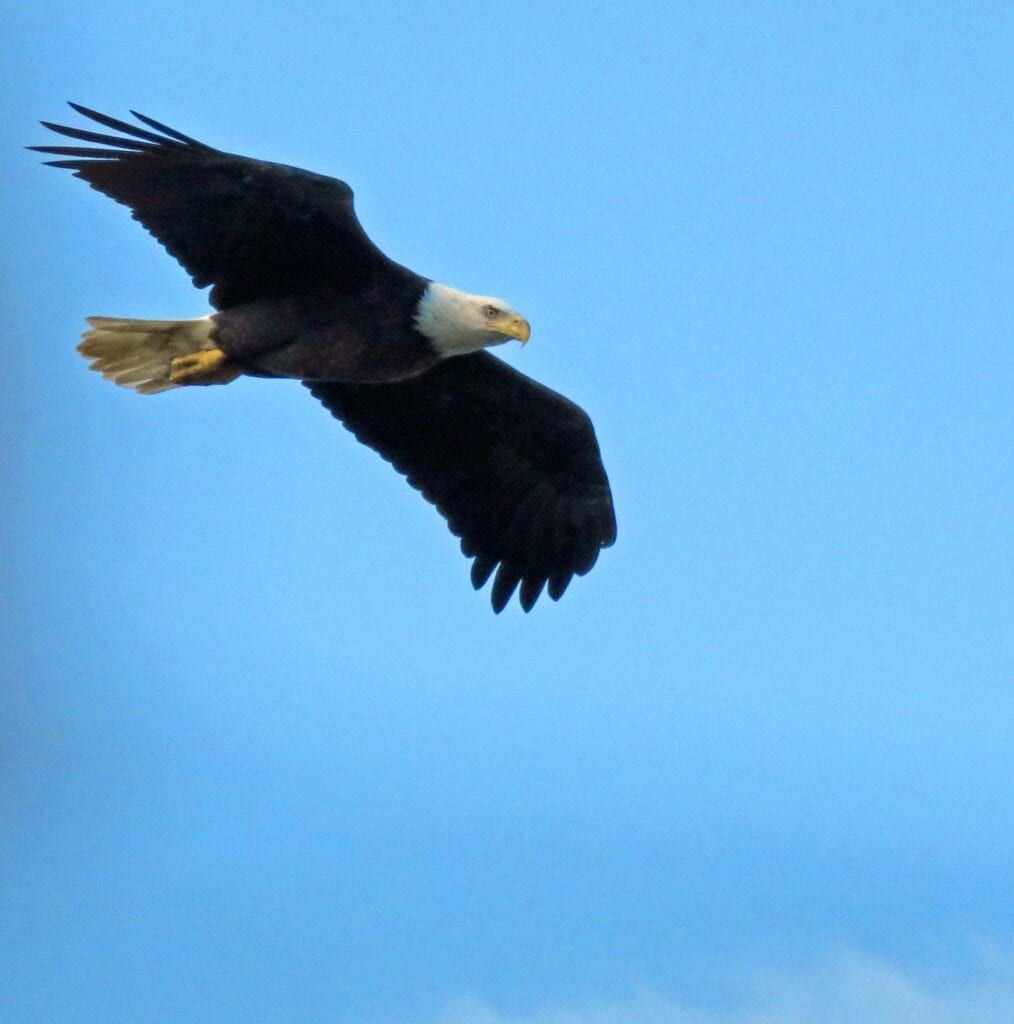
An American bald eagle, along the cliffs over the Potomac River leading to the Chesapeake Bay in Virginia: Glynn Wilson
Check out this short documentary on eagles called “Hunters of the Sky.”
For more information on bald eagle management and additional background, please visit the Eagle Management page.



